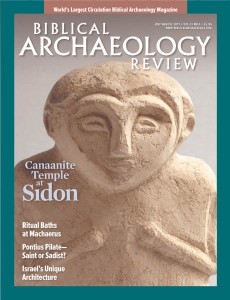In his 2016 Bethsaida excavation report, Director Rami Arav of the University of Nebraska at Omaha reports that the tenth-century B.C.E. destruction level at et-Tell (which Rami Arav contends is the Biblical site of Bethsaida) is often attributed to the Egyptian pharaoh Sheshonq (Biblical Shishak).
The destruction was total. Arav notes that “no complete or intact vessels were found in the dig”—only broken pieces of pottery: shards (also called “sherds” by archaeologists, short for “potsherds”).
Many students are unfamiliar with this term for broken pieces of pottery and find it difficult to remember. They may be surprised to learn that it was used by Shakespeare in Hamlet.
Ophelia, Hamlet’s beloved, has just killed herself. A priest notes, “Shards, flints and pebbles should be thrown on her” (Hamlet Act 5, Scene 1).
For those not familiar with the archaeology of shards, the editor of my Shakespeare volume1 explains in a footnote that “shards” are “broken pieces of pottery.”—H.S.
Already a library member? Log in here.
Institution user? Log in with your IP address.

